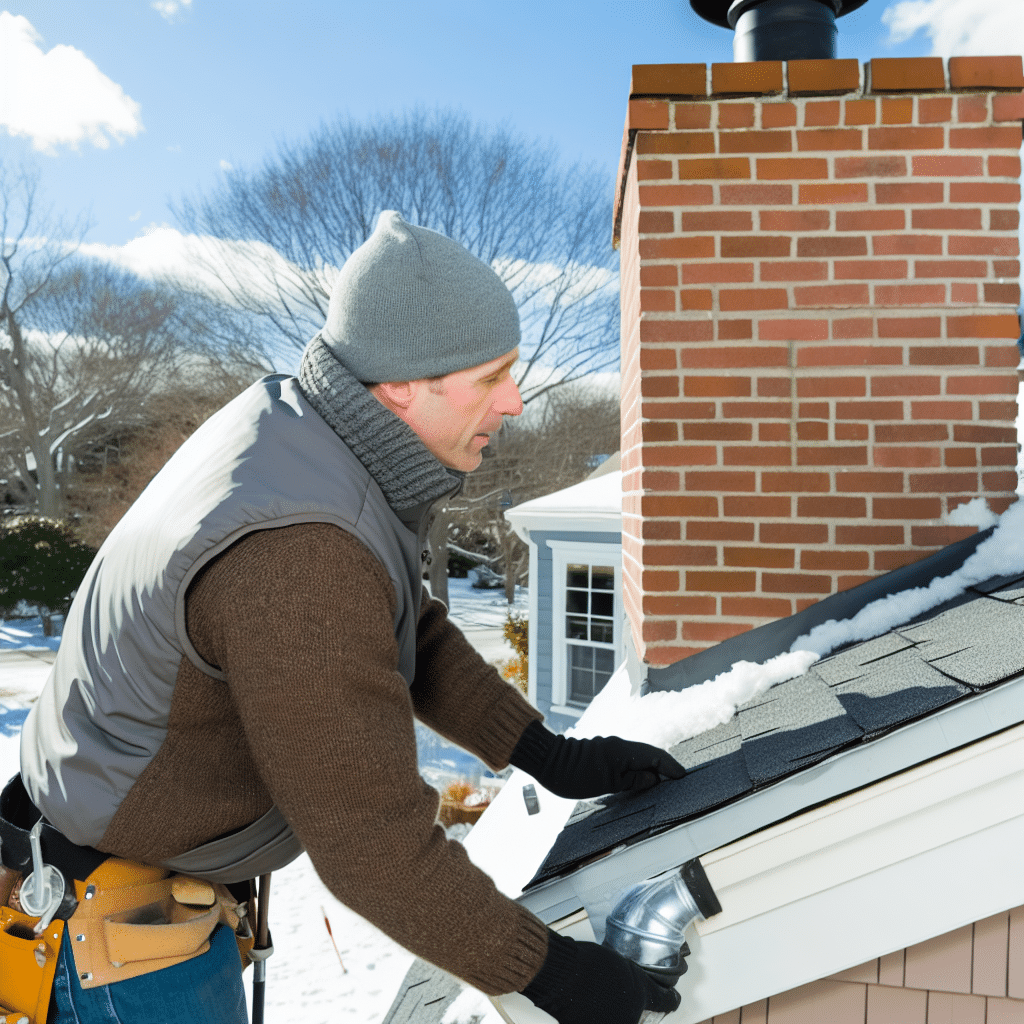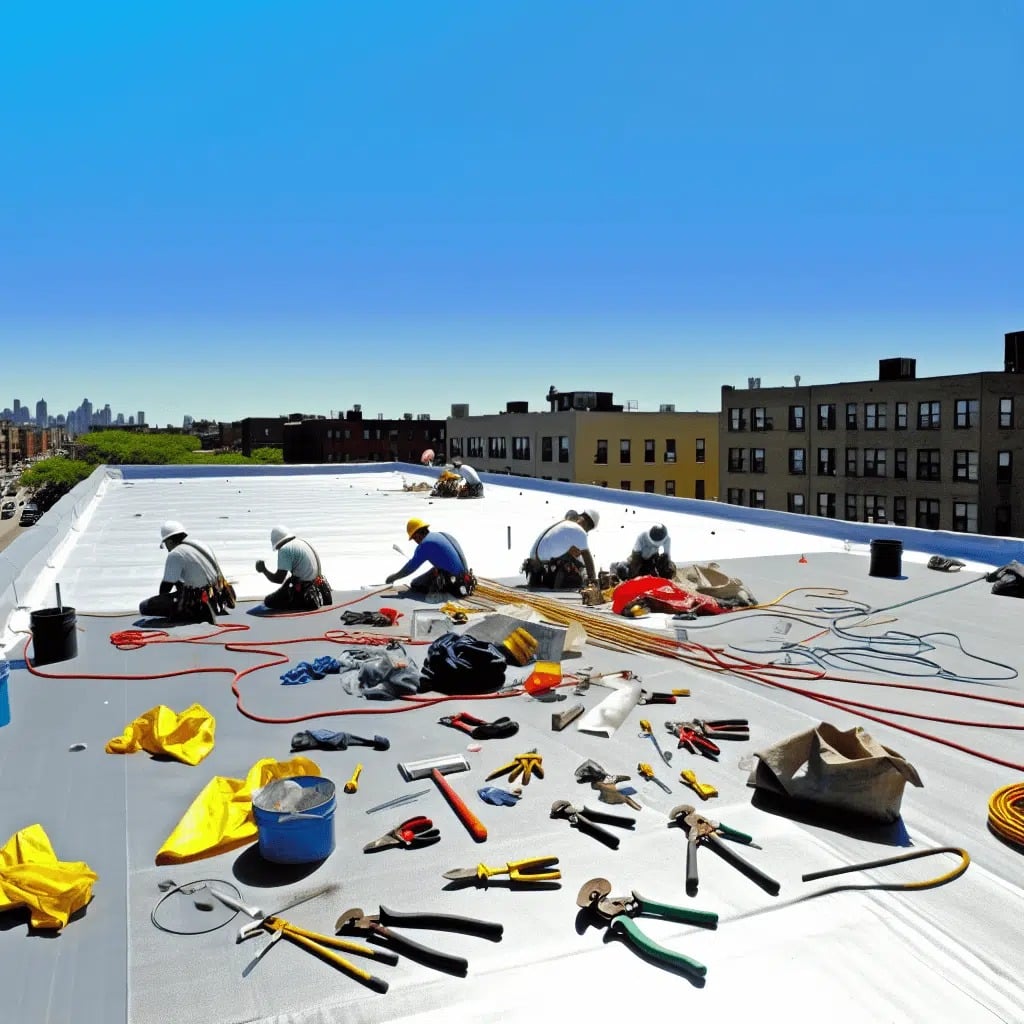The Shield Against the Storm
Imagine a fierce storm raging outside, fierce winds howling, and rain battering your home. At times like these, roof flashing stands as your first line of defense, guiding water away from the vulnerable seams and joints of your roof. It’s a simple component, often overlooked, yet it holds the key to safeguarding your cherished haven. Neglecting this fundamental aspect of roof maintenance can lead to disastrous consequences, as even a small breach in flashing can invite severe water damage.
Though invisible to the casual observer, the impact of failing roof flashing reveals itself through water stains on ceilings, peeling paint, and worse. These signs often signal a lapse in urgency that can balloon into a rooftop emergency. Considering this, it’s evident that roof flashing and repair should never fall to the bottom of a homeowner’s to-do list. This vital component demands regular attention – a small investment in flashing care now can prevent a mountain of repair bills later. It’s not just about repair; it’s about proactive protection, ensuring that your roof continues to perform its protective duties without falter.
As the seasons cycle and the harsh Cranston winter approaches, the necessity of well-maintained roof flashing becomes more apparent. This vital piece of the roofing puzzle works tirelessly, often in the toughest conditions, to channel water away from areas where it could cause harm. Prompt and professional flashing maintenance and repair provide not just peace of mind but also a pronounced extension to the life of your entire roofing system. Remember, it’s not just a roof overhead; it’s the safety and comfort of your family beneath it that matters most.
Understanding the Role of Roof Flashing
Roof flashing may sound like a technical term, but its function is straightforward and essential for every Cranston home. Positioned strategically where the roof meets a vertical surface, such as a wall or chimney, flashing serves as a weatherproofing tool. It’s designed to act as a barrier, redirecting water flow away from potential entry points and towards gutters or the ground. When properly installed and maintained, this humble hero plays a significant role in preserving both the aesthetic and structural integrity of your dwelling. It ensures that the inner layers of your roof remain unexposed to the ravages of water ingress.
Ignoring the flashing’s condition can spell trouble, and homeowners would do well to regard this as a warning. Each year, Cranston faces a range of weather challenges, from summer storms to winter blizzards, all of which can test the mettle of your roof’s flashing. A routine inspection should be on your annual home maintenance checklist to gauge the flashing’s health. Particularly after periods of severe weather, an expert eye can identify issues that are not immediately obvious but may lead to significant damage if left unattended. It’s during these inspections that the experience and knowledge of a professional become invaluable.
Our dedication to the roofs of Cranston is evident in our thorough approach to inspecting and repairing roof flashing. At Rinaldi Roofing, we understand that knowledge is as crucial as the materials we use. That’s why we not only address immediate repairs but also offer advice on maintaining your roof’s longevity. By considering the specific challenges your roof faces, we craft lasting solutions to keep you and your home dry and comfortable through all seasons. Trust us to fortify your home’s defense against nature’s elements with precision and expertise.
The anchor text provided for the external link is missing. Could you please provide it so I can include it in the content as required?
Insights From The Experts
Tip 1:
Schedule bi-annual inspections of your roof to catch any minor issues in flashing before they escalate. An expert eye can spot signs of wear that homeowners might miss.
Tip 2:
If you notice any damage to your roof flashing, addressing it promptly can prevent more extensive repairs. Water damage from leaks can lead to costly interior repairs and mold issues.
Tip 3:
For homes in Cranston, consider weather-resistant materials for roof flashing, especially to withstand harsh winter conditions. A professional can recommend the best options for your specific roofing needs.
Tip 4:
Understand the importance of proper flashing installation. Inexpertly installed flashing may not only fail to protect your home but also void certain roof material warranties.
Tip 5:
Stay proactive with emergency roof fixes. Keeping a roofing professional’s contact handy ensures that you can quickly address unexpected flashing damages caused by storms or other events.
Expert Insights on Roof Flashing Queries
How often should roof flashing be inspected for potential issues?
Ideally, roof flashing should be inspected at least twice a year, typically in the spring and fall, to ensure it’s prepared for extreme weather conditions. Additional checks should follow any severe storms or abnormal events.
Can damaged flashing be repaired, or does it need to be replaced?
Minor damages to flashing can often be repaired, but if the damage is extensive or if the flashing is old and deteriorating, replacement is the safer, more long-term solution.
What are the signs that indicate the need for immediate roof flashing repair?
Signs such as visible rust or corrosion, cracks, gaps, or if the flashing has become loose or detached, are clear indicators that urgent repair is necessary to prevent potential leaks.
How does regular maintenance of roof flashing impact the longevity of a roof?
Regular maintenance, including inspections and timely repairs, will significantly extend the life of your roof by preventing water seepage that can cause rot, mold, and structural damage.
What actions should homeowners take if they suspect a leak due to faulty flashing?
If you suspect a leak, it’s crucial to contact a professional roofing contractor immediately to assess and address the issue to prevent further damage to your home.



